If you are following the anti-aging media news, you’ve heard about the alleged benefits of calorie restriction (also known as food restriction or diet restriction). Studies in numerous species have demonstrated that reduction of calories 30-50% below ad libitum levels of a nutritious diet slows the aging process, increases lifespan, reduces the incidence and delays the onset of age-related diseases, improves stress resistance, and decelerates functional decline.
In a previous article http://www.brinkzone.com/general-health/calorie-restriction-vs-the-bodybuilding-lifestyle/ Will pointed out that practicing calorie restriction counters the bodybuilding lifestyle. Here I will explain that it not only counters the bodybuilding lifestyle, but also is makes it impossible to implement and reap the benefits of other healthy lifestyle habits, and in addition brings along several pitfalls and negative health consequences in humans.
While animal studies can and do shed light on what’s going on at mechanistic level, we have to be very careful and resist the temptation to extrapolate results from animal experiments to humans. Here I will make the case for that we can age gracefully and successfully and increase our health span and “youngevity” without having to starve ourselves for life.
Background
While the news on the anti-aging effects of calorie restriction are relatively recent in popular media, calorie restriction has been studied scientifically since the 1930s 1, 2. Results of many subsequent studies different species have demonstrated that substantial reductions of food intake to 30–60% below spontaneous intake levels decreases the incidence and age of onset of many age-related diseases, and increases both average and maximum 3, 4.
How does it work?
The exact mechanisms underlying the aging retardation, prevention of aging-related diseases and extension of average and/ or maximum lifespan with calorie restriction are today under intense scientific scrutiny. While new findings are constantly emerging, calorie restriction causes significant alterations in energy metabolism, oxidative damage, insulin sensitivity, and functional changes in both the neuroendocrine and sympathetic nervous systems 5. On a molecular level, some identified mechanisms underlying the pro-longevity effects of calorie restriction include the following:
(i) reduced oxidative stress and damage 6;
(ii) reduced glycation of macromolecules and lowered accumulation of AGEs (Advanced Glycation End-products) 7-11;
(iii) reduced DNA damage and increased repair 12;
(iv) reduced inflammation and autoimmunity 13;
(v) increased mitochondrial metabolic efficiency to protect the plasma membrane 14;
(vi) reduced damage to cellular components 15;
(vii) enhanced maintenance of age-related patterns of gene expression 16;
(viii) enhanced protection against stress 17, 18
While these molecular level effects are beneficial, they have only been demonstrated in laboratory animals. Calorie restriction in humans has many other effects (some of which have no equivalence in animals) which are not conductive to health (more on this later). Thus, we have to look at all the joint effects of caloric restriction, separately for each species, before we can draw conclusions about its final outcome.
Calorie restriction – just another fancy name for dieting?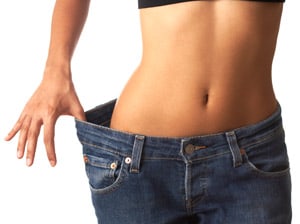
Calorie restriction will obviously benefit anybody who is carrying around excess body fat. Nothing new here; go on a diet (restrict your caloric intake and exercise), lose the flab, reduce your risk factors (like insulin resistance, high blood pressure, etc) and you will live longer. So don’t let advocates of calorie restriction fool you when they support their arguments by referring to studies on overweight (e.g. “overfat”) and obese subjects 19-22. The focus in this article is on the effects of calorie restriction in non-obese folks.
Drum roll… does it work in non-obese humans?
This is a controversial question even among researchers who are actively studying calorie restriction. The opinions as split; roughly half of them taking the position that yes, calorie restriction can be applicable and confer health benefits to humans, while the other half argue that calorie restriction isn’t applicable to non-obese humans and instead poses a risk for detrimental health effects 23 (more on that later).
Why wouldn’t calorie restriction have the same beneficial anti-aging effects in non-obese humans as in non-obese animals?
Humans differ in many ways from rodents and non-human primates. Firstly, laboratory animals live in artificial environments and often are “metabolically morbid”24, 25. It is noteworthy that calorie restriction increases life span most in rodents with large spontaneous food intake, but has a minor effect on lean litter mates 26.
Secondly, rodents and non-human primates (even rhesus monkeys) have much shorter life spans than humans, and have been selected under very different evolutionary pressures 27-30. This will cause them to respond differently to food restriction and other environmental situations 23, 29. This is especially true when it comes to aging, because aging is not a programmed process in the sense that no genes have evolved specifically to cause damage and aging 31. Prominent gerontologists all agree that aging is a result of evolutionary neglect, not evolutionary intent 32-35. Mechanisms of aging might therefore not be expected to be as highly conserved between distantly related organisms as are mechanisms of development and metabolism 31.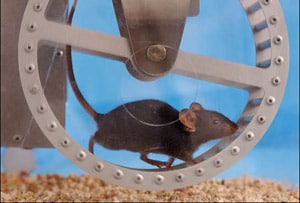
Thirdly, in comparison to humans, exercise appears to have only minor benefits in terms of lifespan in rodents 36-39. But even so, exercise does improve average lifespan of rats independent of calorie restriction 40, and increases in food intake is not harmful when balanced by an increase in exercise induced energy expenditure 40.
We all know about the health promoting and anti-aging effects of exercise (see below) and that the majority of us don’t exercise enough. An important consequence of calorie restriction in humans is a reduced spontaneous physical activity level 41-44. Because rodents are not as troubled by heart disease as humans, they don’t derive as much benefit as we do from elevated exercise 38. And they are less negatively affected by reduced exercise and physical inactivity 38. For us, a reduced activity level will have major detrimental health effects that most likely would offset any purported benefits of caloric restriction.
Calorie restriction is not the only example of animal experimental results that don’t directly apply to humans. Other examples are CLA 45, leptin 46, 47 and torcetrapib 48, 49 (a drug use to elevate HDL “good cholesterol” levels) which all show a lot of promise in rodents, but failed to replicate their beneficial effects in humans, and actually ended up causing more harm than good in humans 45, 48, 49. Another prime example that results from animal experiments cannot be directly extrapolated to humans is growth hormone (GH) and IGF-1. In animals, GH/IGF-1 deficiency confers longevity 50, 51. However, in humans, GH/ IGF-1 deficiency is a risk factor for cardiovascular disease and, therefore, early death 52. I will cover this in much more depth in an upcoming article on hormone replacement therapy (HRT).
Adverse health effects of calorie restriction in humans, and especially in non-obese humans
Calorie restriction in non-obese people induces the following detrimental effects:
– Decreases muscle mass and strength 53 and exercise intolerance 54.
– Reduces spontaneous physical activity levels 41, 43, 44 and energy expenditure 42, 44, 55, 56.
– Lowers testosterone 57, IGF-1 58-60 and thyroid hormone 61 levels.
– Increases cortisol levels 62.
– Lightheadedness and dizziness 54.
– Negative psychological effects; constant hunger, preoccupation with food, binge eating, emotional deadening and/or depression, mood swings, irritability, anxiety, and social isolation 54, 63.
By reducing spontaneous physical activity and energy expenditure, calorie restriction lowers energy flux. Energy flux refers to the absolute level of energy intake and expenditure under conditions of energy balance (that is, when caloric intake equals caloric output) 64, 65. A high energy flux is a key mechanism contributing to the elevated resting metabolic rate seen in habitually exercising people 66, which in turn can help in the fight against obesity 67. A low relative resting metabolic rate (RMR), expressed in relation to fat-free mass, is a risk factor for subsequent fat gain 68. After 4 years of follow-up, the risk of gaining 10 kg was approximately seven times greater in those subjects with the lowest relative RMR than in those with the highest RMR. The subjects who gained more than 10 kg had a relative RMR that was only 70 calories lower per day (24 hour period) than those who didn’t gain. The rate of relative total (24-hour) energy expenditure was estimated to be responsible for up to 40% of the weight change68. This points to the importance of RMR in obesity prevention, in addition to total energy expenditure. Further support for the importance of keeping a high energy flux comes from a study showing that the age-related decline in RMR is related to age-associated reductions in exercise volume and energy intake, and does not occur in those who maintain exercise volume and/or energy intake at a level similar to that of younger peers 69. A high energy flux also increases RMR in younger adults 64, and is therefore has benefits regardless of age.
A notable finding that totally counters the proposed benefits of calorie restriction is that physical activity energy expenditure (which caloric restriction counteracts) is strongly associated with a lower risk of mortality 70, a reduced rate of death and preserved health 71 (more in this below).
The cortisol elevation seen with calorie restriction has dual negative effects in that it not only adds bite to your appetite 72 and thereby makes calorie restriction hard to maintain for longer periods of time, but also breaks down muscle tissue 73. It’s notable that a lower physical activity, which as mentioned above is a consequence of calorie restriction, amplifies the catabolic response of muscle to cortisol 73. Thus, long-term calorie restriction not only elevates cortisol, but also contributes to making the muscles more susceptible to its catabolic effects. The muscle catabolic effect seen with calorie restriction will further exacerbate sarcopenia (age related muscle loss) and its consequences 74-79.
More info on the risks associated with calorie restriction can be found on the website of the calorie restriction (CR) society: http://www.crsociety.org/resources/risks
Considering these side-effects, it is not surprising that there is no evidence showing that calorie restriction extends maximum life span or life expectancy in lean humans 19, 80. And there probably never will be. Thus, it is ironc that the (CR) society’s goal is to “help people of all ages live longer and healthier lives by eating fewer calories with adequate nutrition (ie, providing enough essential nutrients to cover survival needs)”.
I also want to comment on the CR society statement of adequate nutrition. There are two important issues here:
First, adequate nutrition as defined by “covering survival needs” is not optimal. It is well known that several nutrients (eg omega-3 fats, protein, vitamin D, vitamin K2, vitamin E. vitamin C, calcium etc) have major health promoting effects when ingested in larger amounts than necessary to cover just survival needs.
Second, adequate nutrition cannot make up for the serious side effects of calorie restriction listed above.
The negative psychological and social consequences induced by chronic calorie restriction in humans have no equivalent in animals. I want to point out that even researchers who are advocates of calorie restriction have expressed their concern and concluded that calorie restriction would be harmful in lean people 19.
What about the Okinawans?
The Okinawan population is renowned for their reduced morbidity and mortality having the greatest percentage of centenarians anywhere in the world 81, 82. Compared to Americans, the mortality rate of Okinawans between the age of 60 and 64 years is 50% lower. The death rates due to heart disease, stroke, and cancer is approximately 30–40% lower compared to the rest of Japan and even more so compared to the United States. Why do Okinawans have the longest disability-free life expectancy in the world? 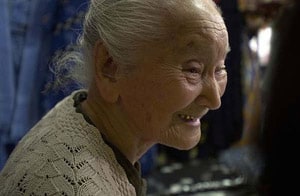
Calorie restriction proponents believe the answer is their diet. The Okinawans consume a diet lower in calories compared to the rest of Japan by 20% and the United States by 40%. Their diet mimics the amount of caloric restriction imposed on experimental animals, and appears to also mimic the effects of the calorie restricted diet in animals. However, the Okinawan diet provides more than just “adequate nutrition”. It consists mainly of vegetables, legumes, fruits, seaweed, fish, and unique vegetable varieties (eg konnyaku, shiitake Mushroom, hechima, gobo, tofu) and herbs/spices (Ucchin, Fuchiba, Hihatsu, Ichoba), which are well-known for the health promoting effects 83-85 (the Okinawan longevity foods deserve an article in its own right). In contrast to the Western diet, the Okinawan longevity foods are highly anti-inflammatory and anti-acidogenic 85. The Okinawans also have a very different stress-free ancestral lifestyle and culture that the Western world 86. Thus, attributing their healthiness to their calorie restriction is a major flaw. Another fact to bear in mind when calorie restriction proponents bring up the Okinawans as evidence is that none of the Okinawans have achieved the maximum life-span recorded by the French woman Jeanne Calment (122 years).
Living Fast, Dying When?
More than 100 years ago it was documented that energy expenditure expressed in relation to body size and lifespan was relatively fixed 87. This led to the conclusion that energy used up faster will shorten lifespan, and the rate of living theory of aging. Based on this theory, things wear out with use and the faster they are used, the sooner they wear out. In line with this reasoning, the reduced energy expenditure seen calorie restriction has been proposed to be one mechanism behind its longevity extending effects in different organism and animals 88.
However, this has been refuted by inconsistencies among birds and bats which live several fold longer than do mammals of comparable body size and resting metabolic rate 89. Additionally, rats exposed to long duration cold exposure increased their energy expenditure, but did not have a shortened lifespan 90. These studies and others 91, 92, together with falsification of the original pretenses that gave rise to the rate of living theory 93, have completely refuted the concept that an increased energy expenditure decreases longevity. Further support comes from a study showing that retardation of the aging process can occur without the restriction of calories or any other nutrient per unit of lean body mass 91.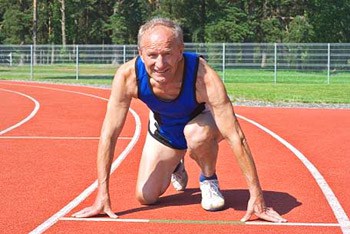
Energy expenditure data in humans also boldly refute the rate of living theory of aging. An increase in free-living activity energy expenditure of approx. 300 calories/day has been associated with a 32% lower risk of mortality, even after adjusting for age, gender, race, weight, height, percentage of body fat, and sleep duration, health status, education, prevalent health conditions, and smoking behavior 70. This study also found that individuals expending higher levels of physical activity energy were more likely to work for pay and climb stairs. This indicates that elderly who engage in physical activity (which calorie restriction would counteract) are functionally independent, which is a very important outcome and goal for anti-aging interventions 70. This was confirmed in a follow-up study which reported that activity energy expenditure is strongly associated with reduced mobility impairment and preserved physical function 94. A growing body of evidence confirms that activity energy expenditure might be an important determinant of lifespan 95, 96. Fitness enhancement and muscle gain is a well documented anti-aging strategy 96, and both fitness muscle growth can only be achieved via an increased energy flux. Thus, the importance for physical activity for human health and longevity is a major counter argument against calorie restriction in humans.
Calorie restriction mimetics – the best of two worlds
While evidence is accumulating that long-term calorie restriction in non-obese humans falls short of the expectations as the ‘‘fountain of youth’’ as seen in lower organisms and animals, research has identified substances that activate some the same molecular and signaling pathways as calorie restriction does. These so called calorie restriction mimetics have potential to confer health benefits without imposing calorie restriction and risking its side effects, and is an emerging research field 97-101. The focus of calorie restriction mimetic research is to discover nutrient sensors and their upstream effectors leading to the anti-aging and life-extending effects of calorie restriction seen in animals 102. I will cover this in an upcoming article.
Conclusion
The answers to a scientific debate started with the question “‘Do you think that calorie restriction can increase longevity in all species, particularly in human beings?’’ neatly summarizes the contrasting views and ambiguity regarding calorie restriction for anti-aging in humans 23, 103:
(1) We do not know for sure;
(2) It’s too early to decide;
(3) Currently we think so (based on incomplete monkey data);
(4) It cannot work in humans;
(5) We will never know for sure;
The truth is, there is direct experimental evidence that you will live longer from practicing calorie restriction. Instead of prolongation of life, calorie restriction can more appropriately be regarded as way to prevent life shortening caused by obesity.
The key to health and anti-aging in humans is a high energy flux. While some animals can benefit from calorie restriction, we will be better off getting up from our chairs and putting on our sneakers. Keeping a high energy flux via regular exercise and non-exercise activities is an effective strategy for maintaining energy expenditure and regulating appetite, and thereby preventing obesity, sarcopenia and cardiovascular diseases which plague humans as we get older (but not rodents, in whom most the benefits of calorie restriction are seen). Ironically, in humans long-term calorie restriction induces hormonal and metabolic effects that actually increase the risk for obesity and its consequences, and thus is a recipe for becoming a miserable couch potato.
In humans, exercise, physical fitness and body composition is more important for health, anti-aging and vital longevity than the caloric intake per see. If you implement regular exercise training and non-exercise activities into your lifestyle, you can physiologically “afford” to eat more, and get to be healthier and happier while you live longer.
References:
1. McCay CM, Crowell MF. Prolonging the life span. . Sci Mon. 1934;39:405–414.
2. McCay CM, Crowell MF, Maynard LA. The effect of retarded growth upon the length of life span and upon the ultimate body size. The Journal of nutritional biochemistry. 1935;10:63-79.
3. Masoro EJ. Caloric restriction and aging: an update. Experimental gerontology. 2000;35(3):299-305.
4. Weindruch R, Sohal RS. Seminars in medicine of the Beth Israel Deaconess Medical Center. Caloric intake and aging. The New England journal of medicine. 1997;337(14):986-994.
5. Smith JV, Heilbronn LK, Ravussin E. Energy restriction and aging. Current opinion in clinical nutrition and metabolic care. 2004;7(6):615-622.
6. Sohal RS, Weindruch R. Oxidative stress, caloric restriction, and aging. Science. 1996;273(5271):59-63.
7. Sell DR, Lane MA, Johnson WA, et al. Longevity and the genetic determination of collagen glycoxidation kinetics in mammalian senescence. Proceedings of the National Academy of Sciences of the United States of America. 1996;93(1):485-490.
8. Masoro EJ, Katz MS, McMahan CA. Evidence for the glycation hypothesis of aging from the food-restricted rodent model. Journal of gerontology. 1989;44(1):B20-22.
9. Cefalu WT, Bell-Farrow AD, Wang ZQ, et al. Caloric restriction decreases age-dependent accumulation of the glycoxidation products, N epsilon-(carboxymethyl)lysine and pentosidine, in rat skin collagen. The journals of gerontology Series A, Biological sciences and medical sciences. 1995;50(6):B337-341.
10. Sell DR, Lane MA, Obrenovich ME, et al. The effect of caloric restriction on glycation and glycoxidation in skin collagen of nonhuman primates. The journals of gerontology Series A, Biological sciences and medical sciences. 2003;58(6):508-516.
11. Teillet L, Verbeke P, Gouraud S, et al. Food restriction prevents advanced glycation end product accumulation and retards kidney aging in lean rats. Journal of the American Society of Nephrology : JASN. 2000;11(8):1488-1497.
12. Raffoul JJ, Guo Z, Soofi A, et al. Caloric restriction and genomic stability. The journal of nutrition, health & aging. 1999;3(2):102-110.
13. Chung HY, Kim HJ, Kim JW, et al. The inflammation hypothesis of aging: molecular modulation by calorie restriction. Annals of the New York Academy of Sciences. 2001;928:327-335.
14. de Cabo R, Furer-Galban S, Anson RM, et al. An in vitro model of caloric restriction. Experimental gerontology. 2003;38(6):631-639.
15. Bergamini E, Cavallini G, Donati A, et al. The role of macroautophagy in the ageing process, anti-ageing intervention and age-associated diseases. The international journal of biochemistry & cell biology. 2004;36(12):2392-2404.
16. Weindruch R, Kayo T, Lee CK, et al. Microarray profiling of gene expression in aging and its alteration by caloric restriction in mice. The Journal of nutrition. 2001;131(3):918S-923S.
17. Masoro EJ. Hormesis and the antiaging action of dietary restriction. Experimental gerontology. 1998;33(1-2):61-66.
18. Rattan SI. Applying hormesis in aging research and therapy. Human & experimental toxicology. 2001;20(6):281-285; discussion 293-284.
19. Fontana L, Klein S. Aging, adiposity, and calorie restriction. JAMA : the journal of the American Medical Association. 2007;297(9):986-994.
20. Goldstein DJ. Beneficial health effects of modest weight loss. International journal of obesity and related metabolic disorders : journal of the International Association for the Study of Obesity. 1992;16(6):397-415.
21. Pasanisi F, Contaldo F, de Simone G, et al. Benefits of sustained moderate weight loss in obesity. Nutrition, metabolism, and cardiovascular diseases : NMCD. 2001;11(6):401-406.
22. Vidal J. Updated review on the benefits of weight loss. International journal of obesity and related metabolic disorders : journal of the International Association for the Study of Obesity. 2002;26 Suppl 4:S25-28.
23. Le Bourg E, Rattan SI. Can dietary restriction increase longevity in all species, particularly in human beings? Introduction to a debate among experts. Biogerontology. 2006;7(3):123-125.
24. Martin B, Ji S, Maudsley S, et al. “Control” laboratory rodents are metabolically morbid: why it matters. Proceedings of the National Academy of Sciences of the United States of America. 2010;107(14):6127-6133.
25. Skalicky M, Narath E, Viidik A. Housing conditions influence the survival and body composition of ageing rats. Experimental gerontology. 2001;36(1):159-170.
26. Teillet L, Gouraud S, Corman B. Does food restriction increase life span in lean rats? The journal of nutrition, health & aging. 2004;8(4):213-218.
27. de Grey AD. The unfortunate influence of the weather on the rate of ageing: why human caloric restriction or its emulation may only extend life expectancy by 2-3 years. Gerontology. 2005;51(2):73-82.
28. Harrison DE, Archer JR. Natural selection for extended longevity from food restriction. Growth, development, and aging : GDA. 1989;53(1-2):3.
29. Phelan JP, Rose MR. Why dietary restriction substantially increases longevity in animal models but won’t in humans. Ageing research reviews. 2005;4(3):339-350.
30. Weindruch R, Masoro EJ. Concerns about rodent models for aging research. Journal of gerontology. 1991;46(3):B87-88.
31. Partridge L, Gems D. Mechanisms of ageing: public or private? Nature reviews Genetics. 2002;3(3):165-175.
32. Hayflick L. Biological aging is no longer an unsolved problem. Annals of the New York Academy of Sciences. 2007;1100:1-13.
33. Holliday R. Aging is no longer an unsolved problem in biology. Annals of the New York Academy of Sciences. 2006;1067:1-9.
34. Kirkwood TB. Understanding ageing from an evolutionary perspective. Journal of internal medicine. 2008;263(2):117-127.
35. Rattan SI. Theories of biological aging: genes, proteins, and free radicals. Free radical research. 2006;40(12):1230-1238.
36. Holloszy JO. Mortality rate and longevity of food-restricted exercising male rats: a reevaluation. J Appl Physiol. 1997;82(2):399-403.
37. McCarter RJ, Shimokawa I, Ikeno Y, et al. Physical activity as a factor in the action of dietary restriction on aging: effects in Fischer 344 rats. Aging (Milano). 1997;9(1-2):73-79.
38. Speakman JR, Hambly C. Starving for life: what animal studies can and cannot tell us about the use of caloric restriction to prolong human lifespan. The Journal of nutrition. 2007;137(4):1078-1086.
39. Holloszy JO. The biology of aging. Mayo Clinic proceedings Mayo Clinic. 2000;75 Suppl:S3-8; discussion S8-9.
40. Holloszy JO. Exercise increases average longevity of female rats despite increased food intake and no growth retardation. Journal of gerontology. 1993;48(3):B97-100.
41. Martin CK, Das SK, Lindblad L, et al. Effect of calorie restriction on the free-living physical activity levels of nonobese humans: results of three randomized trials. J Appl Physiol. 2011;110(4):956-963.
42. Martin CK, Heilbronn LK, de Jonge L, et al. Effect of calorie restriction on resting metabolic rate and spontaneous physical activity. Obesity (Silver Spring). 2007;15(12):2964-2973.
43. Redman LM, Heilbronn LK, Martin CK, et al. Metabolic and behavioral compensations in response to caloric restriction: implications for the maintenance of weight loss. PloS one. 2009;4(2):e4377.
44. Weyer C, Walford RL, Harper IT, et al. Energy metabolism after 2 y of energy restriction: the biosphere 2 experiment. The American journal of clinical nutrition. 2000;72(4):946-953.
45. Larsen TM, Toubro S, Astrup A. Efficacy and safety of dietary supplements containing CLA for the treatment of obesity: evidence from animal and human studies. Journal of lipid research. 2003;44(12):2234-2241.
46. Li MD. Leptin and beyond: an odyssey to the central control of body weight. The Yale journal of biology and medicine. 2011;84(1):1-7.
47. Gautron L, Elmquist JK. Sixteen years and counting: an update on leptin in energy balance. The Journal of clinical investigation. 2011;121(6):2087-2093.
48. Barter PJ, Caulfield M, Eriksson M, et al. Effects of torcetrapib in patients at high risk for coronary events. The New England journal of medicine. 2007;357(21):2109-2122.
49. Chapman MJ, Le Goff W, Guerin M, et al. Cholesteryl ester transfer protein: at the heart of the action of lipid-modulating therapy with statins, fibrates, niacin, and cholesteryl ester transfer protein inhibitors. European heart journal. 2010;31(2):149-164.
50. Dozmorov I, Galecki A, Chang Y, et al. Gene expression profile of long-lived snell dwarf mice. The journals of gerontology Series A, Biological sciences and medical sciences. 2002;57(3):B99-108.
51. Ikeno Y, Bronson RT, Hubbard GB, et al. Delayed occurrence of fatal neoplastic diseases in ames dwarf mice: correlation to extended longevity. The journals of gerontology Series A, Biological sciences and medical sciences. 2003;58(4):291-296.
52. Besson A, Salemi S, Gallati S, et al. Reduced longevity in untreated patients with isolated growth hormone deficiency. The Journal of clinical endocrinology and metabolism. 2003;88(8):3664-3667.
53. Weiss EP, Racette SB, Villareal DT, et al. Lower extremity muscle size and strength and aerobic capacity decrease with caloric restriction but not with exercise-induced weight loss. J Appl Physiol. 2007;102(2):634-640.
54. Dirks AJ, Leeuwenburgh C. Caloric restriction in humans: potential pitfalls and health concerns. Mechanisms of ageing and development. 2006;127(1):1-7.
55. Soare A, Cangemi R, Omodei D, et al. Long-term calorie restriction, but not endurance exercise, lowers core body temperature in humans. Aging. 2011;3(4):374-379.
56. Heilbronn LK, de Jonge L, Frisard MI, et al. Effect of 6-month calorie restriction on biomarkers of longevity, metabolic adaptation, and oxidative stress in overweight individuals: a randomized controlled trial. JAMA : the journal of the American Medical Association. 2006;295(13):1539-1548.
57. Cangemi R, Friedmann AJ, Holloszy JO, et al. Long-term effects of calorie restriction on serum sex-hormone concentrations in men. Aging cell. 2010;9(2):236-242.
58. Clemmons DR, Underwood LE. Nutritional regulation of IGF-I and IGF binding proteins. Annual review of nutrition. 1991;11:393-412.
59. Ketelslegers JM, Maiter D, Maes M, et al. Nutritional regulation of the growth hormone and insulin-like growth factor-binding proteins. Hormone research. 1996;45(3-5):252-257.
60. Thissen JP, Ketelslegers JM, Underwood LE. Nutritional regulation of the insulin-like growth factors. Endocrine reviews. 1994;15(1):80-101.
61. Fontana L, Klein S, Holloszy JO, et al. Effect of long-term calorie restriction with adequate protein and micronutrients on thyroid hormones. The Journal of clinical endocrinology and metabolism. 2006;91(8):3232-3235.
62. Masoro EJ, Austad SN. The evolution of the antiaging action of dietary restriction: a hypothesis. The journals of gerontology Series A, Biological sciences and medical sciences. 1996;51(6):B387-391.
63. Bathalon GP, Hays NP, Meydani SN, et al. Metabolic, psychological, and health correlates of dietary restraint in healthy postmenopausal women. The journals of gerontology Series A, Biological sciences and medical sciences. 2001;56(4):M206-211.
64. Goran MI, Calles-Escandon J, Poehlman ET, et al. Effects of increased energy intake and/or physical activity on energy expenditure in young healthy men. J Appl Physiol. 1994;77(1):366-372.
65. Bullough RC, Gillette CA, Harris MA, et al. Interaction of acute changes in exercise energy expenditure and energy intake on resting metabolic rate. The American journal of clinical nutrition. 1995;61(3):473-481.
66. Bell C, Day DS, Jones PP, et al. High energy flux mediates the tonically augmented beta-adrenergic support of resting metabolic rate in habitually exercising older adults. The Journal of clinical endocrinology and metabolism. 2004;89(7):3573-3578.
67. Astrup A, Buemann B, Toubro S, et al. Low resting metabolic rate in subjects predisposed to obesity: a role for thyroid status. The American journal of clinical nutrition. 1996;63(6):879-883.
68. Ravussin E, Lillioja S, Knowler WC, et al. Reduced rate of energy expenditure as a risk factor for body-weight gain. The New England journal of medicine. 1988;318(8):467-472.
69. van Pelt RE, Dinneno FA, Seals DR, et al. Age-related decline in RMR in physically active men: relation to exercise volume and energy intake. American journal of physiology Endocrinology and metabolism. 2001;281(3):E633-639.
70. Manini TM, Everhart JE, Patel KV, et al. Daily activity energy expenditure and mortality among older adults. JAMA : the journal of the American Medical Association. 2006;296(2):171-179.
71. Paffenbarger RS, Jr., Hyde RT, Wing AL, et al. The association of changes in physical-activity level and other lifestyle characteristics with mortality among men. The New England journal of medicine. 1993;328(8):538-545.
72. Lawson EA, Eddy KT, Donoho D, et al. Appetite-regulating hormones cortisol and peptide YY are associated with disordered eating psychopathology, independent of body mass index. European journal of endocrinology / European Federation of Endocrine Societies. 2011;164(2):253-261.
73. Ferrando AA, Stuart CA, Sheffield-Moore M, et al. Inactivity amplifies the catabolic response of skeletal muscle to cortisol. The Journal of clinical endocrinology and metabolism. 1999;84(10):3515-3521.
74. Degens H. The role of systemic inflammation in age-related muscle weakness and wasting. Scandinavian journal of medicine & science in sports. 2010;20(1):28-38.
75. Evans WJ, Campbell WW. Sarcopenia and age-related changes in body composition and functional capacity. The Journal of nutrition. 1993;123(2 Suppl):465-468.
76. Hawkins SA, Wiswell RA, Marcell TJ. Exercise and the master athlete–a model of successful aging? The journals of gerontology Series A, Biological sciences and medical sciences. 2003;58(11):1009-1011.
77. Marcell TJ. Sarcopenia: causes, consequences, and preventions. The journals of gerontology Series A, Biological sciences and medical sciences. 2003;58(10):M911-916.
78. Reed RL, Pearlmutter L, Yochum K, et al. The relationship between muscle mass and muscle strength in the elderly. Journal of the American Geriatrics Society. 1991;39(6):555-561.
79. Roubenoff R. Sarcopenia and its implications for the elderly. European journal of clinical nutrition. 2000;54 Suppl 3:S40-47.
80. Smith DL, Jr., Nagy TR, Allison DB. Calorie restriction: what recent results suggest for the future of ageing research. European journal of clinical investigation. 2010;40(5):440-450.
81. Heilbronn LK, Ravussin E. Calorie restriction and aging: review of the literature and implications for studies in humans. The American journal of clinical nutrition. 2003;78(3):361-369.
82. Kagawa Y. Impact of Westernization on the nutrition of Japanese: changes in physique, cancer, longevity and centenarians. Preventive medicine. 1978;7(2):205-217.
83. Okabe T, Toda T, Inafuku M, et al. Antiatherosclerotic function of Kokuto, Okinawan noncentrifugal cane sugar. Journal of agricultural and food chemistry. 2009;57(1):69-75.
84. Sho H. History and characteristics of Okinawan longevity food. Asia Pacific journal of clinical nutrition. 2001;10(2):159-164.
85. Willcox DC, Willcox BJ, Todoriki H, et al. The Okinawan diet: health implications of a low-calorie, nutrient-dense, antioxidant-rich dietary pattern low in glycemic load. Journal of the American College of Nutrition. 2009;28 Suppl:500S-516S.
86. Salen P, de Lorgeril M. The Okinawan diet: a modern view of an ancestral healthy lifestyle. World review of nutrition and dietetics. 2011;102:114-123.
87. Rubner M. Das problem der lebensdauer. Munich: Oldenburg 1908.
88. Ramsey JJ, Harper ME, Weindruch R. Restriction of energy intake, energy expenditure, and aging. Free radical biology & medicine. 2000;29(10):946-968.
89. Austad SN, Fischer KE. Mammalian aging, metabolism, and ecology: evidence from the bats and marsupials. Journal of gerontology. 1991;46(2):B47-53.
90. Holloszy JO, Smith EK. Longevity of cold-exposed rats: a reevaluation of the “rate-of-living theory”. J Appl Physiol. 1986;61(5):1656-1660.
91. McCarter R, Masoro EJ, Yu BP. Does food restriction retard aging by reducing the metabolic rate? The American journal of physiology. 1985;248(4 Pt 1):E488-490.
92. Koubova J, Guarente L. How does calorie restriction work? Genes & development. 2003;17(3):313-321.
93. Lints FA. The rate of living theory revisited. Gerontology. 1989;35(1):36-57.
94. Manini TM, Everhart JE, Patel KV, et al. Activity energy expenditure and mobility limitation in older adults: differential associations by sex. American journal of epidemiology. 2009;169(12):1507-1516.
95. Byberg L, Melhus H, Gedeborg R, et al. Total mortality after changes in leisure time physical activity in 50 year old men: 35 year follow-up of population based cohort. BMJ. 2009;338:b688.
96. Castillo-Garzon MJ, Ruiz JR, Ortega FB, et al. Anti-aging therapy through fitness enhancement. Clinical interventions in aging. 2006;1(3):213-220.
97. Chen D, Guarente L. SIR2: a potential target for calorie restriction mimetics. Trends in molecular medicine. 2007;13(2):64-71.
98. Ingram DK, Anson RM, de Cabo R, et al. Development of calorie restriction mimetics as a prolongevity strategy. Annals of the New York Academy of Sciences. 2004;1019:412-423.
99. Ingram DK, Roth GS. Glycolytic inhibition as a strategy for developing calorie restriction mimetics. Experimental gerontology. 2011;46(2-3):148-154.
100. Ingram DK, Zhu M, Mamczarz J, et al. Calorie restriction mimetics: an emerging research field. Aging cell. 2006;5(2):97-108.
101. Roth GS, Lane MA, Ingram DK. Caloric restriction mimetics: the next phase. Annals of the New York Academy of Sciences. 2005;1057:365-371.
102. Barzilai N, Bartke A. Biological approaches to mechanistically understand the healthy life span extension achieved by calorie restriction and modulation of hormones. The journals of gerontology Series A, Biological sciences and medical sciences. 2009;64(2):187-191.
103. Shanley DP, Kirkwood TB. Caloric restriction does not enhance longevity in all species and is unlikely to do so in humans. Biogerontology. 2006;7(3):165-168.



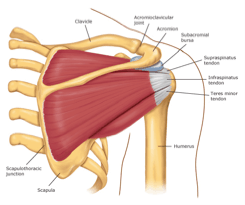


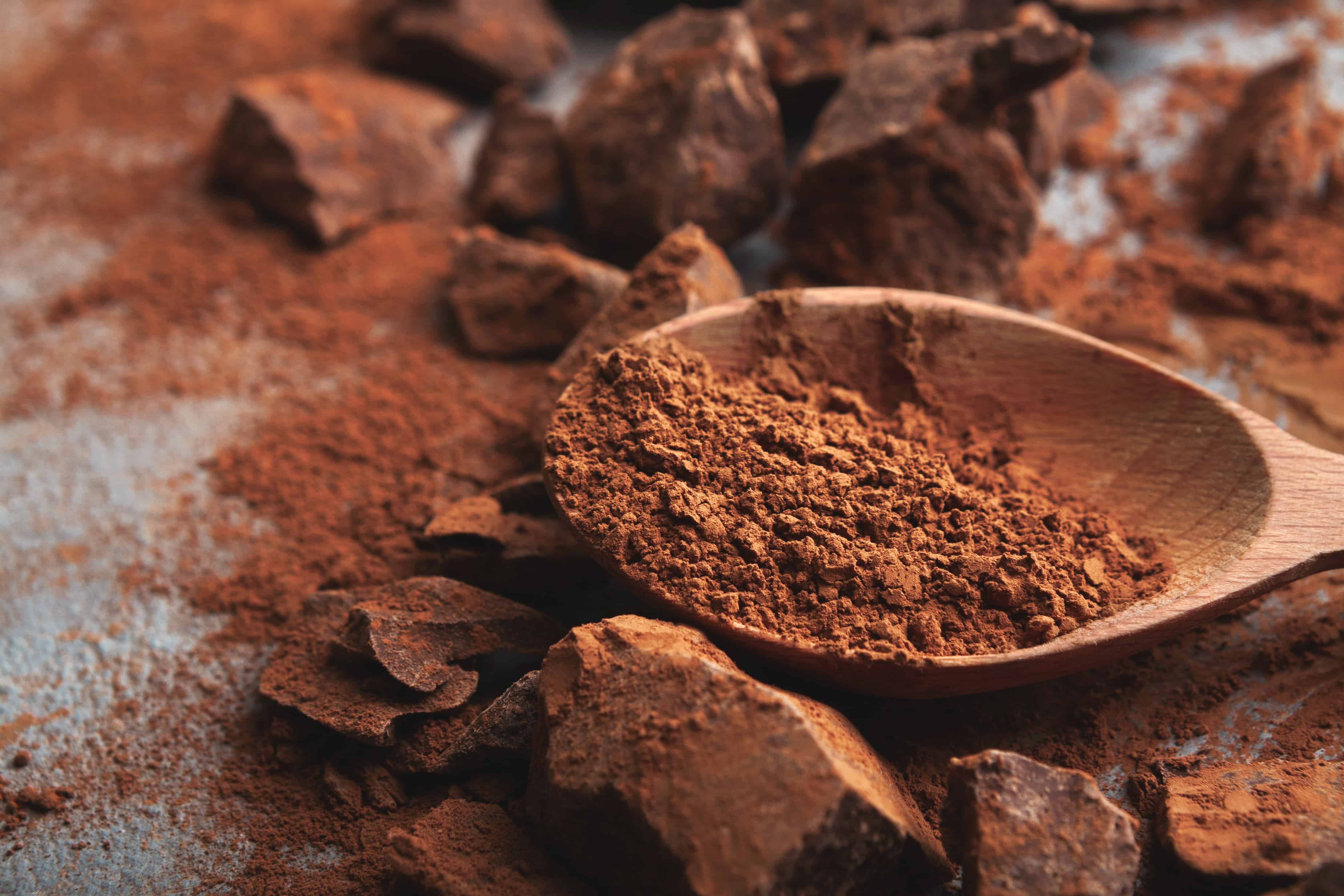
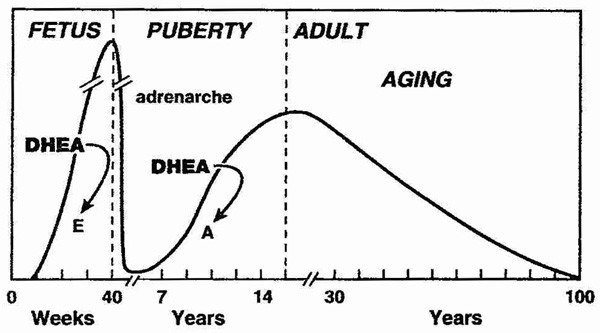

Great stuff as always, Monica. Thank you very much. I would like to hear more about how this information squares with ALL of those interested in fitness who are at some level restricting calories. How about the dude (no one in particular!), who is stuck at that 12 or 13% bodyfat level, would really like to see abs once in his life, and feels like he’s constantly calorie restricted? I suppose the answer is obvious. If he’s not reducing weight, he’s not so calorie restricted. But are those seeking single digit BF%, since obviously not obease, doing themselves harm with the restriction that they require, beyond irritating everyone around them with their bad mood?!
I think many fitness people who hit the plateau are actually running in starvation mode. A chronic caloric restriction will put brakes on all components of energy expenditure and counteract further fat loss. I think the solution for these folks is to increase their energy flux by uppering their caloric intake and adding in some HIIT (High Intensity Interval Training) or high intensity continuous training on top of their weight lifting routines.
I have been experimenting with intermittent fasting. Seems to be slightly helpful for fasting glucose levels, which may be the factor behind CR. I fast 3 days a week, two meals. Interesting that my energy level doesn’t seem to decrease at all. It may produce longer life but it takes years to determine.
Rodent studies shows that intermittent fasting has the same longevity effect as traditional CR.
The most important thing is that we find a dietary regimen that fits our preferences and lifestyle.
I should probably say a bit more. I don’t try to restrict calories on the 4 days I don’t fast, but I have noticed that I am satisfied with less food. I have lost weight, not a lot (around 10#), but I am trying to work out daily to protect muscles on fast days. I do NOT restrict water. Occasionally herbal tea, no sweetening. That is my model. My blood glucose was a bit high, ca. 105, and the doc says, don’t worry. But I am consistently below 100, often below 95, so a small difference there.
If you doctor says “no worry” about your fasting blood glucose 105, get another doctor!!!!
It should be below 90.
Green coffee bean extract helps lower both fasting and postprandial (after-meal) blood glucose. Give it a try. I’d also recommend you lower your carb intake.
Interesting!
I think this was a great article. I am looking forward to the article on CR mimetics. I want to know if the benefits are for rats only.
I also was hoping some information about S.O.D. and glutathione would be mentioned in another article. Whey Concentrate, for example, is a great way to increase glutathione as Will Brink has even documented himself for LEF. A Chinese herbalist, Li Ching Yun, reputed to have lived quite long seemed to use the S.O.D. enhancers of jiaogulan, he shou wu, goji berries, and bacopa (or perhaps gotu kola). At any rate, the observation/theory is if an animal has 2x the amount of S.O.D. per body weight, the animal lives 2x as long. Some other S.O.D. enhancers would be tribulus, apple polyphenols, sage, rooibos tea, cordyceps CS-4… at least there are claims of this.
There’s a lot of promising research on CR mimetics, and human studies so far have shown significant beneficial health effects. Resveratrol is one of the most studied CR mimetics.
Let’s save the discussion on S.O.D. and glutathione for another article.
Great article. Very well researched. I feel there is some confusion in the conclusion. You say increase your calorie intake to increase energy expenditure, but isn’t it reversed? When we exercise more we then compensate by increasing calorie intake. Otherwise it would be calorie in, calorie out theory which is a false premise. A calorie is not a calorie. One calorie of sugar compared to one calorie of fat is different considering the body’s response to those calories. The sugar calorie initiates an insulin response which drives fat storage. The fat calorie does not. So fat gain/loss is hormonal not caloric. Your title of the article is important since non-obese people have different metabolisms than obese. I have been practicing IT for six mounts with wonderful results, but that’s me. I think it is an individual issue for the most part. Calories do count but not for the reasons we think they do. How do you feel about Gary Taub’s books about fat gain?
It goes both ways, ie the relation between caloric intake and physical activity/exercise is bidirectional.
It is very true that a calorie is not a calorie. However, fat gain/loss is not purely hormonal. Caloric intake (and other metabolic parameters as well for that matter) does have an impact on the absolute amount of weight change. You cannot lose fat while being in a positive energy balance. Diet composition, on the other hand, exerts it main effect by influencing the composition of the weight change (ie, the relative amount of fat lost or gained).
Which of Gary Taub’s books do you mean?
Taubes book is “Why We Get Fat And What To Do About It”. I like the way you phased that last sentence. I think that is important since many talk about weight loss and it is body fat loss people actually mean, Weight loss can encompass water, bone, muscle as well as fat. Diet composition, as you say, is key. I’m a chef and I am always sourcing my food, i.e.: where did it come from, how was it grown, what was it fed, how was it cooked, etc.?
Great info on a question I’d not thought to ask.
I totally agree that this level of extreme calorie restriction would be a bad idea for a person living or desiring to live a strong, active life.
As for anyone else, I get that it can support longevity but at what cost? Who wants to live an extra day at 900 calories a day? It doesn’t seem like a quality life. I’ve theorized for some time that the way this CR works is simply slowing the processes in the body down–sort of changing it’s internal process and thus wear or miles on the cells.
Now, of course, when you add exercise you’ve stepped up processes and miles any way, so using your body seems to work against the preserving it. Unless of course, you’re taking your approach (and mine) to living longer stronger vs. survival.
To Your Full Strength,
Shawn
What you have been theorized is summarized in the rate of living theory, which as you now know has been falsified.
I’d go as far to say that chronic CR won’t work for anybody, because it isn’t compatible with an active lifestyle, which is a prerequisite for a healthy lifespan, i.e. living longer stronger.
Another wonderful Mollica article! I’m most grateful to her and Will for so much useful information. I wish I could have thanked Will in person at the Arnold a couple of weeks ago – I live in Columbus – but just at that time I had to go out of town.
I had one experience with calorie restriction, though I was not doing it for calorie restriction per se: a physician who was passionate about nutrition, having diagnosed me with hypoglycemia, had put me on a diet which seemed very restrictive – leaves, grubs, the bark off trees – no not grubs, that was too much meat – with many supplements. I followed it for several months and felt seriously hungry, but INCREDIBLY good. I was blazing with energy and I slept perfectly, much much better than at any other time in my life. I would be very happy to accept that severe hunger for that wonderful energy. (However later I learned that my doctor had not followed the right protocol for testing for hypoglycemia; a well-respected specialist in internal medicine told me “Dr ,,, found hypoglycemia in half the world”.)
I got off it a little at Christmas, after four months on it, tried to go back on it eating just a little more of the allowed foods – e.g. 3 slices of whole-grain bread instead of 2 – but it didn’t work.
I could not have maintained that diet for much longer anyway. When I review my gym records from that time (the weights were not going down, they were going up, though not dramatically), I see that I was losing weight at the rate of about 5 pounds a month. Since I began at 155 pounds (at six feet even) that obviously could not have been maintained for long.
I have never forgotten that glorious feeling and have ever since been trying to figure out what worked and how it worked and how I could get the magic back again. To my deep regret nothing has worked, not even severe underfeeding. But if that is how people feel, at least sometime, on calorie restriction, that may be a reason for its (apparently somewhat irrational) popularity..
Thanks for sharing your experience. As outlined in the article, for human health promotion, what’s important is physical activity and energy flux.
FYI, a doctor that puts bread (even if it’s whole grain) on the “allowed” list has homework to do on reading up on the latest nutrition research.
Monica
Enjoy your articles…and your legs
Question:
I just watched the PBS special last night, “Eat, Fast and Live Longer,” by Michael Mosley, author of the book, “The Fast Diet.”
He embarks on a fast after interviewing USC’s, Dr. Valter Longo, about the merits of human fasting as means to REDUCE IGF-1, and the reduced risk of cancer and cardiovascular disease doing so allegedly imparts to humans. After Michael’s 4-day fast, his IGF-1 was lowered and the two high -five each other.
The assertion that lower IGF-1 in humans is beneficial in terms of lowering CVD and cancer risk factors is in contrast to what your article cites:
“However, in humans, GH/ IGF-1 deficiency is a risk factor for cardiovascular disease and, therefore, early death 52. I will cover this in much more depth in an upcoming article on hormone replacement therapy (HRT).”
So, which is it? Do we want lower, or higher IFG-1 levels?
Thanks again for great work
Jim
Biology and physiology isn’t always an either-or thing; there are degrees of high/low levels, and a myriad of interacting confounders to take into consideration.
In the context of a healthy lifestyle (regular physical activity, both weight lifting and cardio, and lots of veggies) I’d recommend to aim at the higher level range.
What about the idea that fasting on training days helps maximize growth hormone levels. I don’t currently incorporate this to my training, but I’m curious regardless.
NO!!!!!
First, GH does not increase muscle growth; it elevates non-muscle protein synthesis (cartilage etc). For fitness freaks, GH might help with fat loss, but not with packing on muscle.
Second, muscles needs protein to recover. Training without anabolic nutrients (amino acids) will cause muscle catabolism.
Thanks Monica!
Hello,
could you please illustrate with figures the following:
“… reduction of calories 30-50% below ad libitum levels of a nutritious diet …”
very interesting article
thank you
Dan.
Thanks for your article on CR, Monica, but some of the conclusions are simply not true. On my days of fasting (2 times a week) I have a super sharp brains and lots of energy, so whatever activities I undertake (running, body building, cycling) I always feel stronger and have more endurance than on my non-fasting days. I do eat some plain yoghurt and an apple in the morning, a bowl of vegetables and miso soup in the evening, but make sure it’s never more than 500 calories. I’ve been doing this for a couple of years now, I am 48, definitely not overweight, never was, I just do this intermittent fasting because it gives me more energy and stamina. I would recommend it to anyone older than 35. By the way, science never promised a longer live through intermittent fasting, just a healthier one.
best regards, rebecca miller
Are you familiar with the work of Valter Longo, PhD? He has conducted human studies using the Fasting Mimicry Diet ( a 5 day limited caloric intake scheduled monthly for 3 months/year) . It has conferred reduced HDl, reduced hs CRP and allegedly, increased stem cell production in the human trials, lasting up to 6 months after the modified caloric intake periond of only 3, monthly spaced weeks.. I hope yo uaddresshis work in your forthcoming paper.
Dr. Jim Lombardo